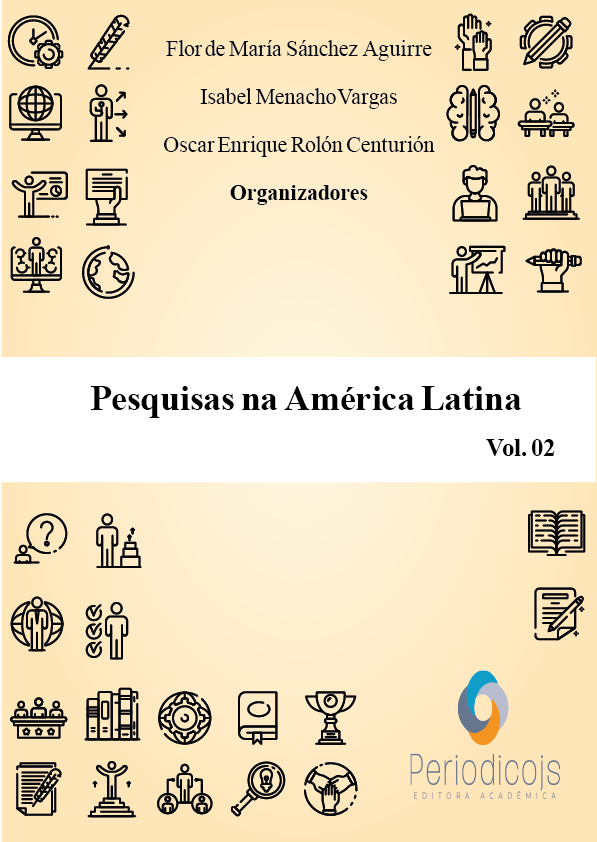Abstract
The objective of the study was to determine the relationship between reading comprehension and the resolution of mathematical problems in students of the second grade of primary school in the Unidad de Gestión Local 01. The study was of a non-experimental and transversal type, the design was correlational, the population was composed of 274 students, using a sample of 100 students. Two tests, a reading comprehension test of linguistic complexity, form A (CLP 2 - A), and a mathematical resolution test according to the national curriculum design of the Ministry of Education, were used to carry out the research. To assess the reliability of both instruments, they were subjected to a pilot test with a sample of 20 students and then applied the KR20 statistic. To contrast the hypotheses, the nonparametric statistic, Rho de Spearman, was used. The results obtained concluded that there is a direct and significant relationship between the variables analyzed, when obtaining a value of 0.874, there is also a positive relationship between reading comprehension and the resolution of addition problems, subtraction and solving problems involving the interpretation of graphs, where a value of 0.765, 0.282, 0.826, and 0.714 was obtained respectively.
References
Balbín, A. (2018) Comprensión lectora y resolución de problemas matemáticos en estudiantes de secundaria de El Tambo - Huancayo (Tesis para optar el Grado Académico de Maestro en Educación - Mención: Tecnología Educativa) Universidad Nacional del Centro del Perú – Unidad de Posgrado de la Facultad de Educación – Huancayo – Perú
Canales Alfaro, M. (2019). Comprensión lectora y resolución de problemas matemáticos en estudiantes de un colegio privado de Lima. Revista De Investigación En Psicología, 21(2), 215-224. https://doi.org/10.15381/rinvp.v21i2.15823
Catalá, G., Catalá, M. Molina, E. y Monclús, R. (2001). Evaluación de la comprensión lectura. Barcelona, España: Grao.
Condori Castillo, W. W. (2019). LA COMPRENSIÓN DE LECTURA Y SU RELACIÓN CON LA RESOLUCIÓN DE PROBLEMAS MATEMÁTICOS. Revista De Investigaciones De La Escuela De Posgrado De La UNA PUNO, 8(2), 1037 - 1047. https://doi.org/10.26788/epg.v8i2.895
Couso-Domínguez, I., & Vieiro-Iglesias, P. (2017). Competencia lectora y resolución de problemas matemáticos. Revista de Estudios e Investigación en Psicología y Educación, (01), 153-162. https://doi.org/10.17979/reipe.2017.0.01.2477
García Olaya, Mary. (2016). Comprensión lectora y resolución de problemas matemáticos en los alumnos del segundo grado de educación primaria de una Institución Educativa Privada del distrito de Santiago de Surco perteneciente a la UGEL 07. Universidad Ricardo Palma. Tesis de Posgrado. Lima, Perú.
Gil, D. & De Guzmán, M (2005). La enseñanza de las ciencias y la matemática. Tendencias e innovaciones. Madrid: Popular.
Hernández, R. y Fernández, C. y Baptista, M. (2014) Metodología de la investigación. (6ta. Ed.) México: McGraw-Hill.
Jara, M., De la Peña, R., Álvarez, M. y Paz, S. (2010) Modelos de interacción como estrategia metodológica en la resolución de problemas para el aprendizaje de la matemática en los alumnos del 6to grado de Educación Primaria, en las instituciones educativas estatales, UGEL Nº 1, San Juan de Miraflores. Lima: Universidad Nacional de Educación Enrique Guzmán y Valle. Lima-Perú.
Ministerio de Educación del Perú. (2007b). El desarrollo de la educación. Lima: Oficina de Planificación Estratégica y Medición de la Calidad Educativa, Comisión Nacional Peruana de Cooperación con la UNESCO
Montero, L., & Mahecha, J. (2020). Comprensión y resolución de problemas matemáticos desde la macroestructura del texto. Praxis & Saber, 11(26), e9862. https://doi.org/10.19053/22160159.v11.n26.2020.9862
OCDE (2017). Mejores políticas para una mejor vida. (s/f). Programa Internacional de Evaluación de los Alumnos (PISA). Recuperado de:http://www.oecd.org/centrodemexico/medios/programainternacionaldeevaluaciondelosalumnospisa.htm (30, 11, 2017).
Perkins, D. (1995). El contenido: hacia una pedagogía de la comprensión. En D. Perkins (Ed.). La escuela inteligente. Barcelona: Gedisa.
Polya, G. (1997): Cómo plantear y resolver problemas, México: Trillas.
Redón, Á. B., & Aroca, Á. S. (2018, April 1). Learning mathematics through the r programming language in secondary education. Educacion Matematica. Mexican Society for Research and Dissemination of Mathematics Education. https://doi.org/10.24844/EM3001.05
Reyes Soto, Dayan, Pérez Serey, Jazmin. (2019). Comprensión lectora y rendimiento de matemáticas: Estudiantes chilenos de 4° medio. Areté, ISSN 1657-2513, Null 19, Nº. 2, 2019, Pags. 1-10.
Sánchez, H. y Reyes, C. (2017). Metodología y diseños en la investigación científica. (5ta. Ed.) Lima-Perú: Business Support Aneth SRL.
Solé (2009) Estrategias de lectura. España: ICE de la Universitat de Barcelona y Editoriales GRAÓ, de Irif, S.L.
Solé, I. (1992). Estrategias de lectura. Barcelona: Grao.
Vásquez, L (2019). Relación del nivel de comprensión lectora y rendimiento académico de los estudiantes de la Policía Nacional del Perú, Alipio Ponce Vásquez de Puente Piedra. Revista virtual SCIÉNDO, 22(2). https://doi.org/10.17268/sciendo.2019.015
Vega, R. (2017). Método de resolución de problemas según George Pólya para mejorar la capacidad de comprensión en la resolución de problemas. (Tesis de licenciatura). Chimbote: Universidad Nacional del Santa.

